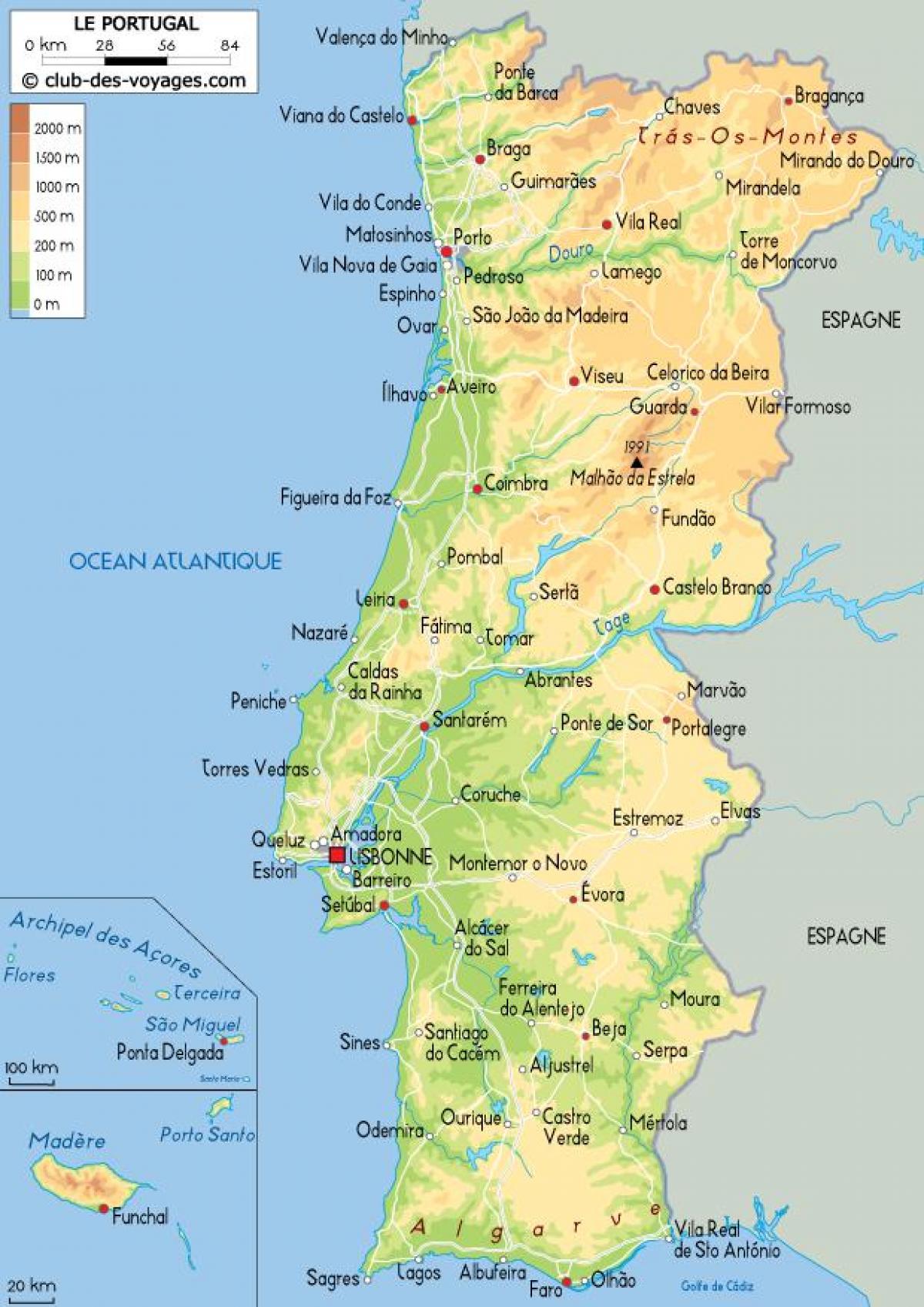search
Map of Portugal
Portugal on a map. Map of Portugal (Southern Europe - Europe) to print. Map of Portugal (Southern Europe - Europe) to download. Portugal is a full member of the Latin Union (1983) and the Organization of Ibero-American States (1949) as its mentioned in the map of Portugal. It has a friendship alliance and dual citizenship treaty with its former colony, Brazil. Portugal and England (subsequently, the United Kingdom of Great Britain and Northern Ireland) share the world oldest active military accord through their Anglo-Portuguese Alliance (Treaty of Windsor), which was signed in 1373. The only international dispute concerns the municipality of Olivença (Olivenza). Under Portuguese sovereignty since 1297, the municipality of Olivenza was ceded to Spain under the Treaty of Badajoz in 1801, after the War of the Oranges. Portugal claimed it back in 1815 under the Treaty of Vienna. However, since the 19th century, it has been continuously and peacefully ruled by Spain which considers the territory not only de facto but also de jure as an integral part of Spain.
Most industry, business and finance are concentrated in Lisbon and Porto metropolitan areas. The districts of Aveiro, Braga, Coimbra, and Leiria are the biggest economic centres outside those two main metropolitan areas as you can see in the map of Portugal. Business services have overtaken more traditional industries such as textiles, clothing, footwear, cork (of which Portugal is the world leading producer), wood products and beverages. The Portuguese currency is the euro (€) and the country economy is in the Eurozone since its starting. Portugal central bank is the Banco de Portugal, which is an integral part of the European System of Central Banks.
Agriculture in Portugal is based on small to medium-sized family-owned dispersed units. However, the sector also includes larger scale intensive farming export-oriented agrobusinesses backed by companies (like Grupo RAR Vitacress, Sovena, Lactogal, Vale da Rosa, Companhia das Lezírias and Valouro) as its shown in the map of Portugal. The country produces a wide variety of crops and livestock products, including green vegetables, rice, corn, barley, olives, oilseeds, nuts, cherries, bilberry, table grapes, edible mushrooms, dairy products, poultry and beef. Forestry has also played an important economic role among the rural communities and industry (namely paper industry that includes Portucel Soporcel Group, engineered wood that includes Sonae Indústria, and furniture that includes several manufacturing plants in and around Paços de Ferreira, the core of Portugal's major industrial operations of IKEA). In 2001, the gross agricultural product accounted for 4% of the national GDP.
Portugal has had a strong tradition in the Portuguese fishing sector and is one of the countries with the highest fish consumption per capita. The main landing sites in Portugal (including Azores and Madeira), according to total landings in weight by year, are the harbours of Matosinhos, Peniche, Olhão, Sesimbra, Figueira da Foz, Sines, Portimão and Madeira as you can see in the map of Portugal. Portuguese processed fish products are exported through several companies under a number of different brands like Conservas Ramirez, the World oldest canned fish producer still in operation, as well as Conservas Nero, Combate, Comur, General, Líder, Manná, Murtosa, Pescador, Pitéu, Tenório, Torreira, Vasco da Gama, etc.
Portugal is a significant European minerals producer and is ranked among Europe leading copper producers. It is also a noted producer of tin, tungsten and uranium. However, the country lacks hydrocarbon exploration potential, as well as iron, aluminium and coal deposits, a feature that has hindered its mining and metallurgy sector development as its mentioned in the map of Portugal. The Panasqueira and Neves-Corvo mines are among the most noted Portuguese mines in operation.


